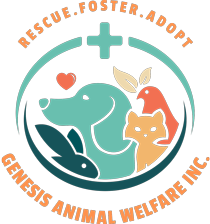Summer brings about a delightful season filled with sunshine and outdoor activities, yet amidst the soaring temperatures, it becomes imperative to prioritize your pet’s hydration needs. Dehydration poses significant health risks to animals, ranging from kidney complications to heat-related illnesses. Fortunately, ensuring your furry companion remains adequately hydrated is an achievable task with some proactive measures and careful attention. Below, you’ll find a comprehensive guide to maintaining your pet’s hydration and overall well-being throughout the summer months.
Ensuring Ample Hydration:
Fresh Water Supply The fundamental rule of pet hydration is simple yet crucial: consistently provide an abundant supply of fresh, clean water. It’s essential to regularly refill your pet’s water bowl throughout the day, while also keeping a vigilant eye out for any signs of contamination or debris. Consider investing in a pet water fountain equipped with filtration and circulation systems to ensure the water remains fresh and enticing for your pet.
Outdoor Adventures:
Portable Water Solutions When embarking on summer outings with your pet, it’s essential to be equipped with portable water solutions. Pack a collapsible silicone bowl and a bottle of water to ensure your furry friend stays hydrated during your adventures. Offering water breaks every thirty minutes during physical activities will help sustain their hydration levels and overall well-being.
Hydration Through Diet
In addition to providing drinking water, you can also incorporate hydration into your pet’s diet through certain foods. Many fruits and vegetables, such as watermelon, cucumber, and carrots, contain high water content and are safe for pets to consume. However, it’s important to remove any seeds and consult your veterinarian regarding appropriate serving sizes for your pet.
Community Care:
Hydration for All The scorching summer heat affects not only your pets but also those in your community, including stray animals. You can make a significant difference by placing extra water bowls in shaded areas around your neighborhood or near your home’s entrance. This simple act of kindness can serve as a lifeline for passing animals seeking relief from the sweltering heat.
Recognizing Dehydration Signs
Being familiar with the signs of dehydration is essential for prompt intervention if your pet shows any symptoms. Common indicators include dry or sticky gums, sunken eyes, lethargy, and loss of appetite. Acting swiftly upon noticing these signs can prevent dehydration-related complications and ensure your pet’s well-being.
Hydration Guidelines
Dehydration can escalate rapidly, with even a 10-15% loss of bodily fluids posing serious health risks to your pet. Veterinarians recommend providing adult dogs with approximately one ounce of water per pound of body weight each day, with similar guidelines applicable to cats, albeit adjustments may be necessary based on their diet and activity levels.
Concluding Thoughts
Ensuring your pet remains adequately hydrated during the hot summer months is a cornerstone of responsible pet ownership. By proactively providing fresh water, incorporating water-rich foods into their diet, and remaining vigilant for signs of dehydration, you can help your pet stay healthy and happy throughout the season. Additionally, extending a helping hand to community animals by providing access to water can make a significant difference in their well-being. With awareness and preparation, you can ensure that both your pet and other animals in your vicinity enjoy a safe, hydrated, and enjoyable summer season.

